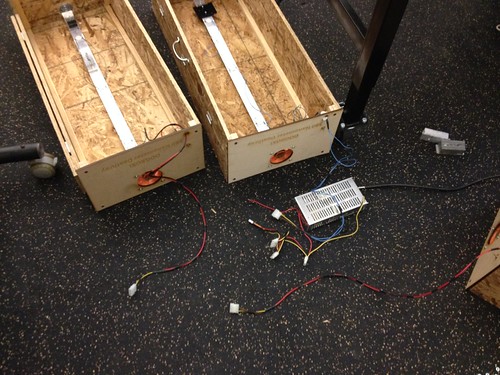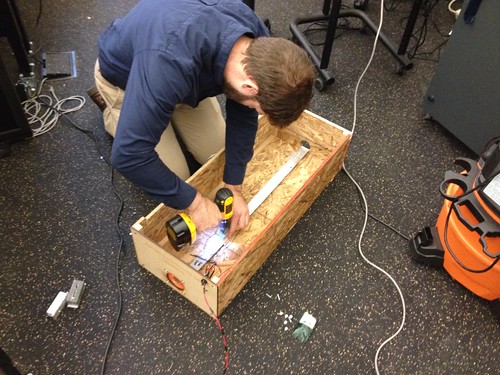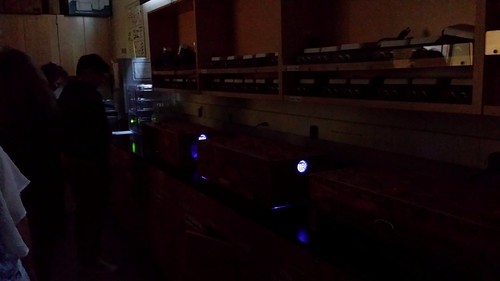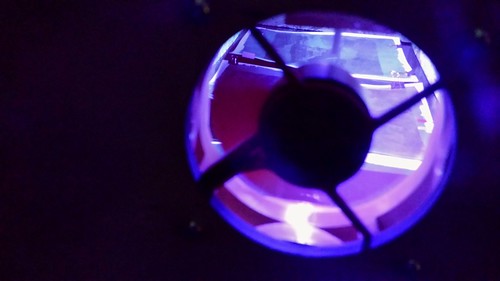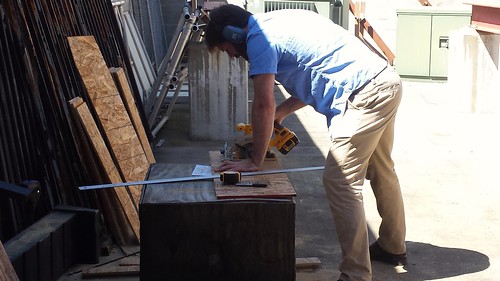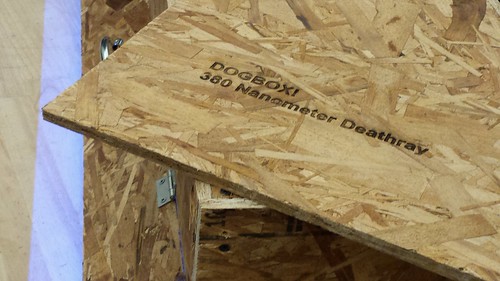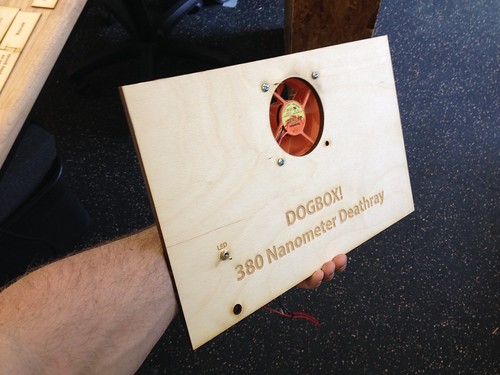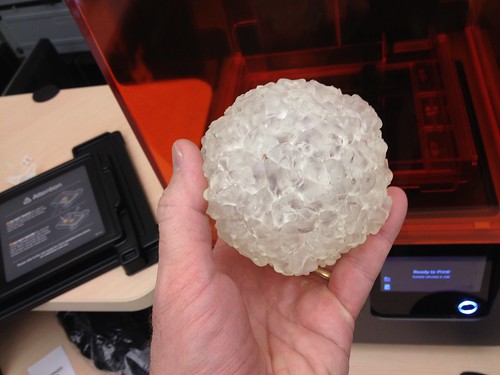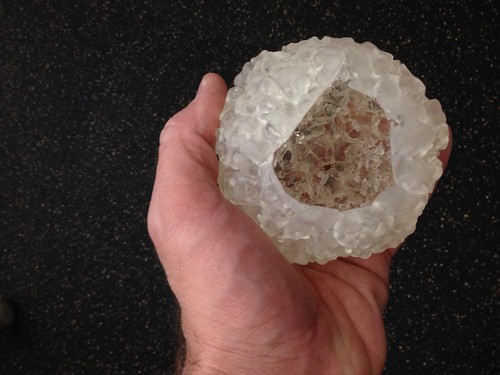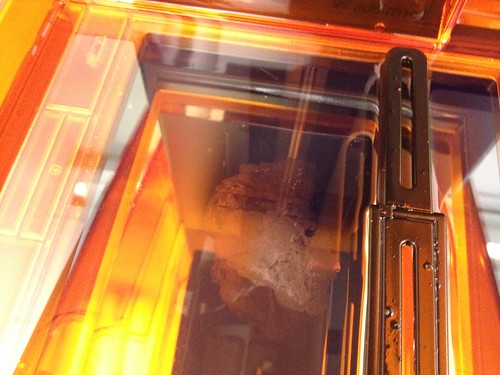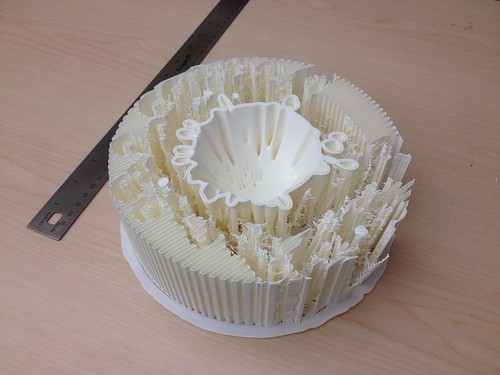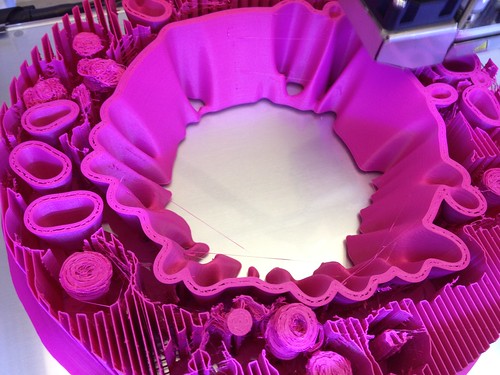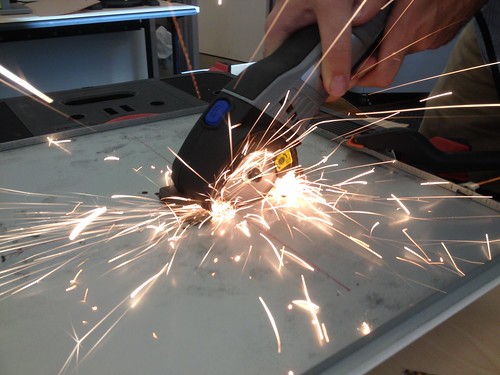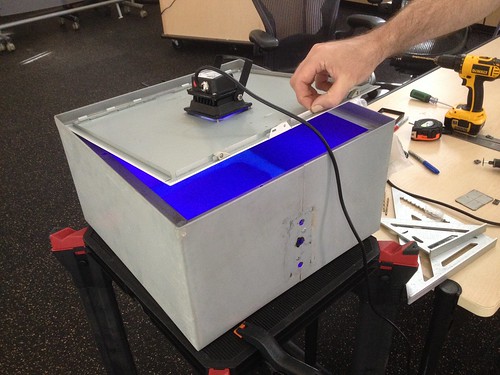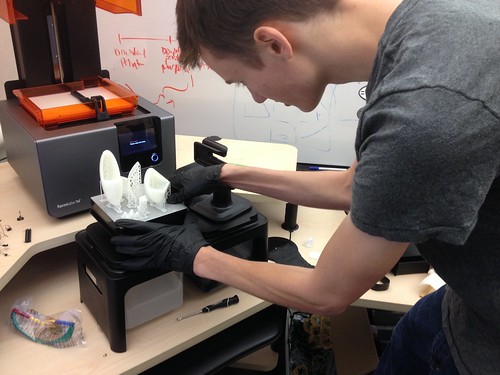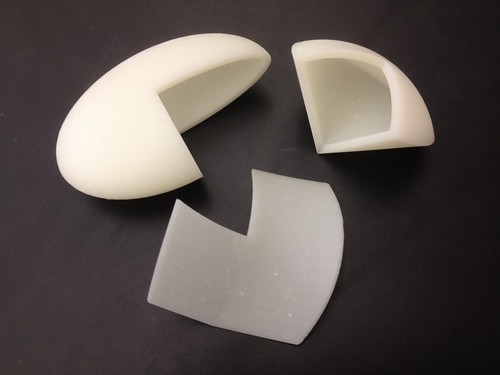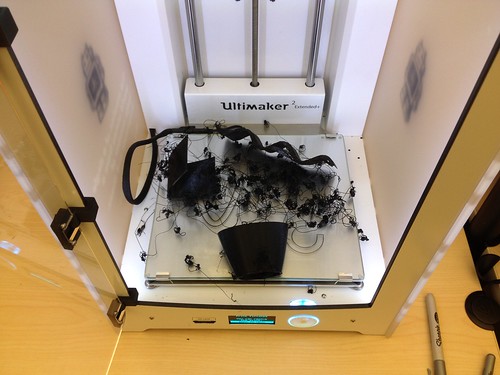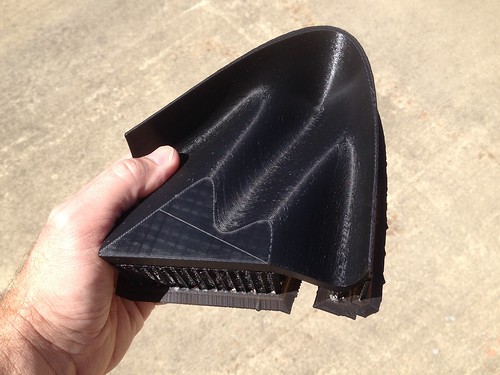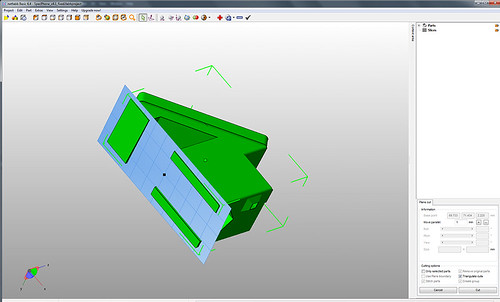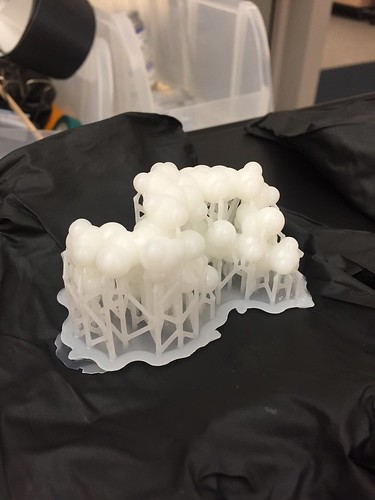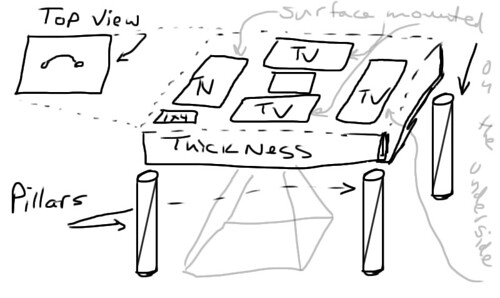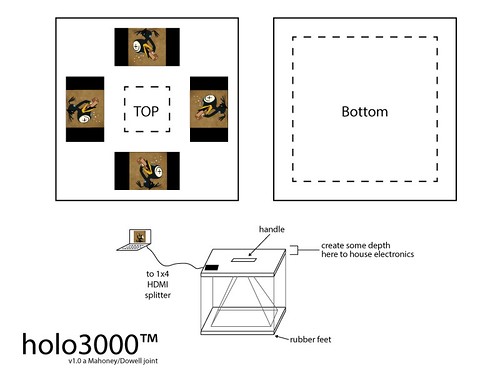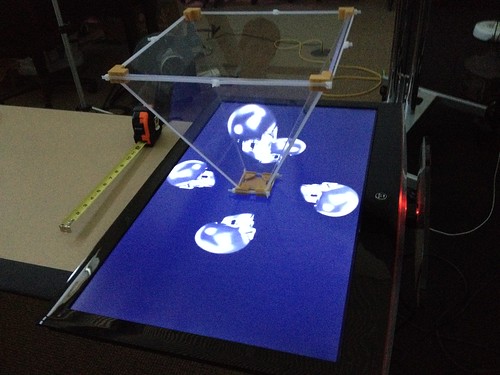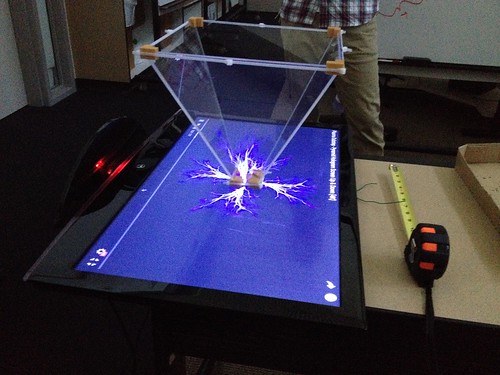Some photos from the very successful cyanotype photography activity Max Mahoney (Chemistry) and Christa Oberth (Chemistry) and Heike Schmid (Art) led last week, using using the exposure boxes we built…
A view of the internals, and the wiring harness, which was scavenged from a PC power supply:
Max attaching a heat sink to the light bar. We finished the final box at about 1:45 PM, and the activity started at 2!
The boxes lined up in the Chemistry lab:
Fired up and working – students developing their prints:
A view through the fan port:
My kodama print:
We were initially worried about the LEDs heating up, but the fans – poached from some recycled external CPU cooling units, and heat sinks, also from the parts bin – pulled so much air that the aluminum bars (themselves functioning as heat sinks) to which the LEDs were attached were entirely cool to the touch throughout the whole process. The LEDs in these particular units are super bright and powerful, and students were very pleased with the resolution, detail, consistency, and intensity of the finished prints.

